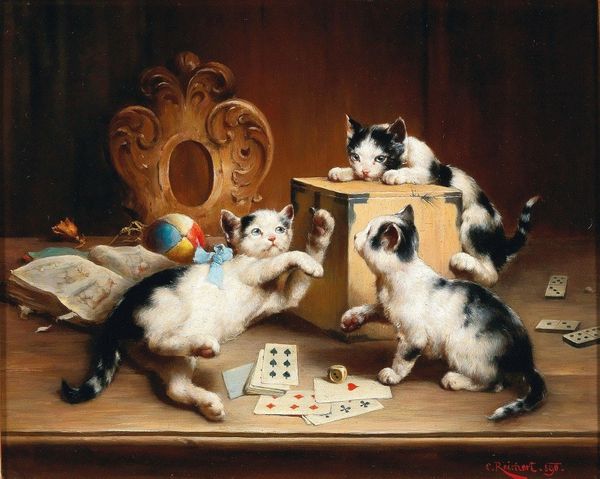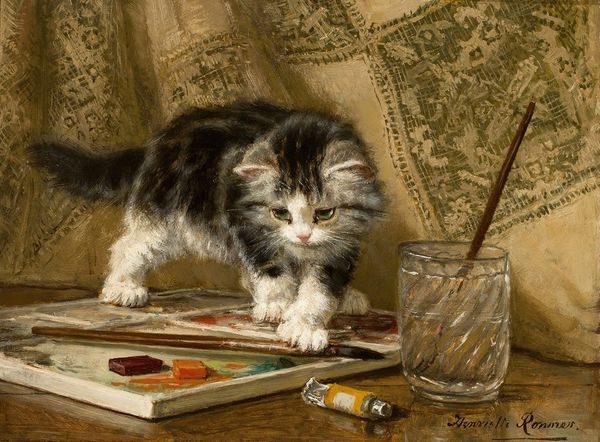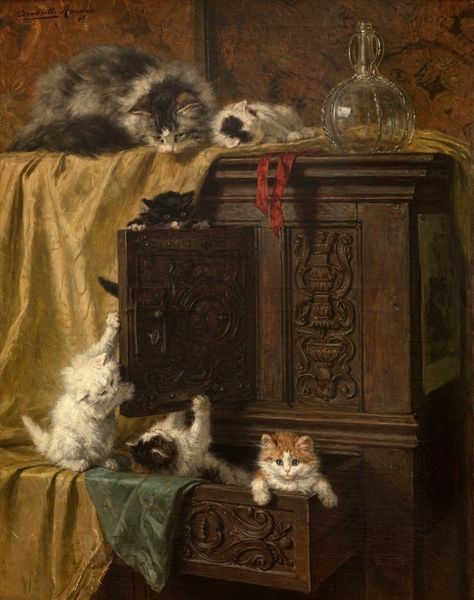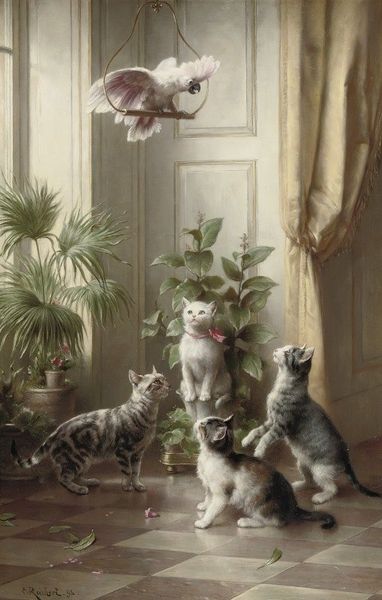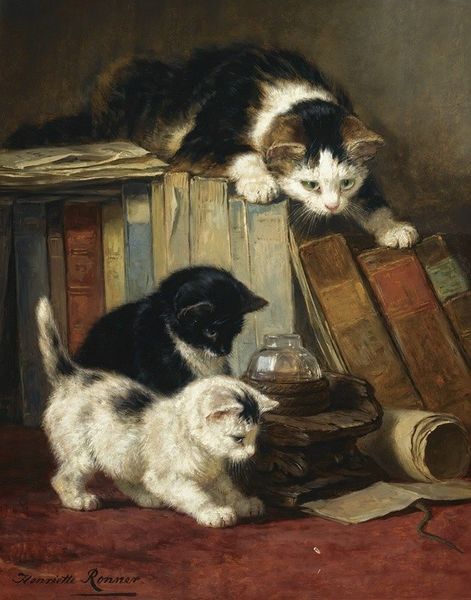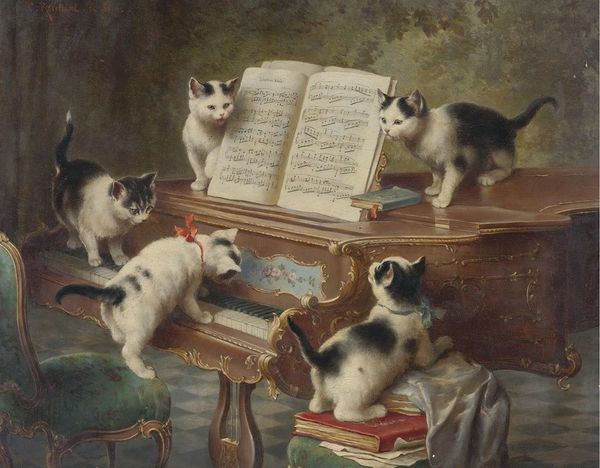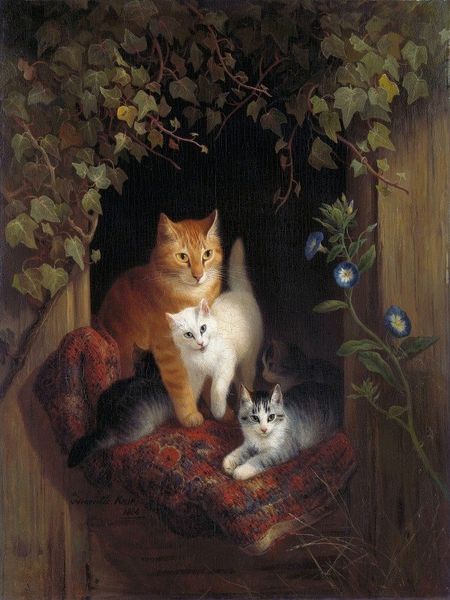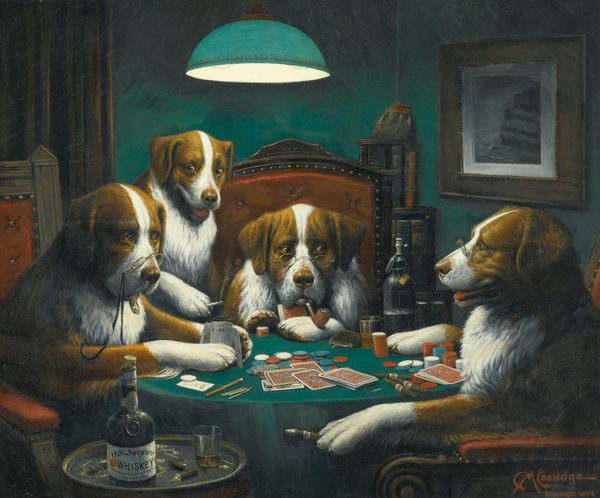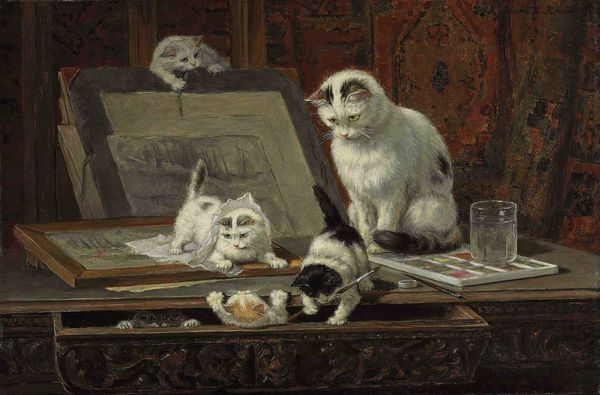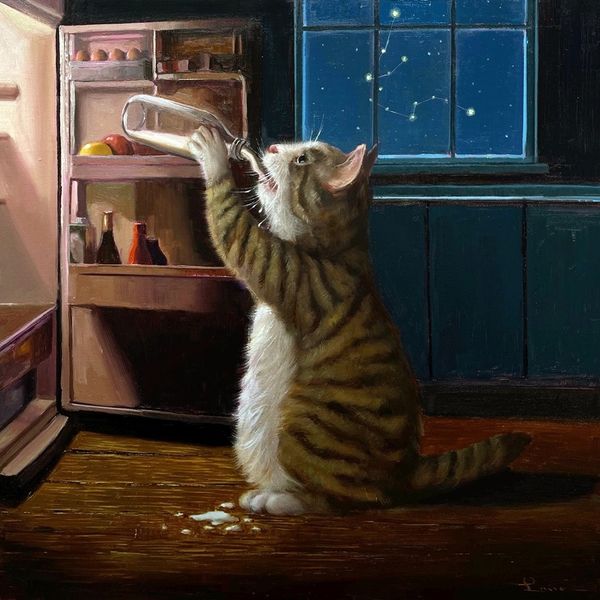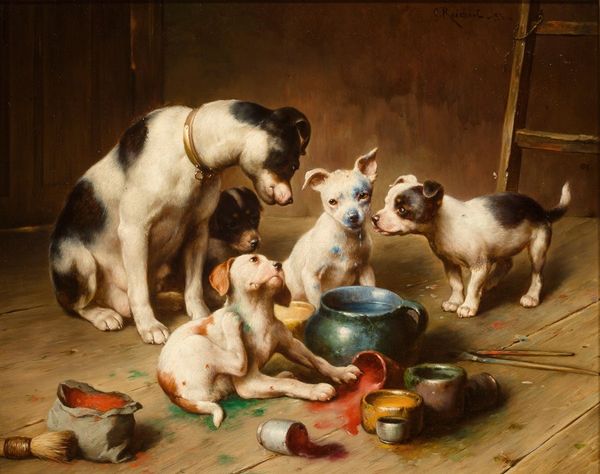
painting, oil-paint
#
painting
#
oil-paint
#
figuration
#
genre-painting
#
realism
Copyright: Public Domain: Artvee
Editor: This is “Playing Cards,” an oil painting, possibly untitled, by Carl Reichert. It’s quite charming – domestic, with three playful kittens causing adorable chaos among playing cards and dominoes. What do you make of this piece? Curator: It's the staging of domestic life, but seen through the disruptive innocence of animals, which functions as a form of cultural commentary. The kittens, almost personified in their interaction with human games, tap into something primordial - the impulse to play, to test boundaries. This image acts like a mirror reflecting humanity's desire to impose order onto the naturally chaotic and volatile essence of life itself. Note how the book's open pages and overturned game suggest a world turned upside down, a fleeting subversion. It invites reflection on the fragility of constructed realities. Editor: I never thought about it that way! It’s deeper than just cute kittens. What's with the mirror-like object in the background? Curator: Precisely! These visual symbols contribute layered interpretations. The ornate golden picture frame or mirror – void of an image – reminds us of absences. We might ask ourselves what it’s meant to reflect. Could it symbolize a lost past, or the futility of searching for permanence in a transient world? Think about how domestic genre paintings like this served a very important symbolic function within the emerging middle class as well: what values are present in the painting? Editor: I suppose it captures an innocence and an implicit challenge to stuffy Victorian social codes, all masked by playful cats? Thank you, this was insightful. Curator: Indeed. Symbolism adds layers to simple observations of daily life, creating lasting meaning through enduring images.
Comments
No comments
Be the first to comment and join the conversation on the ultimate creative platform.
